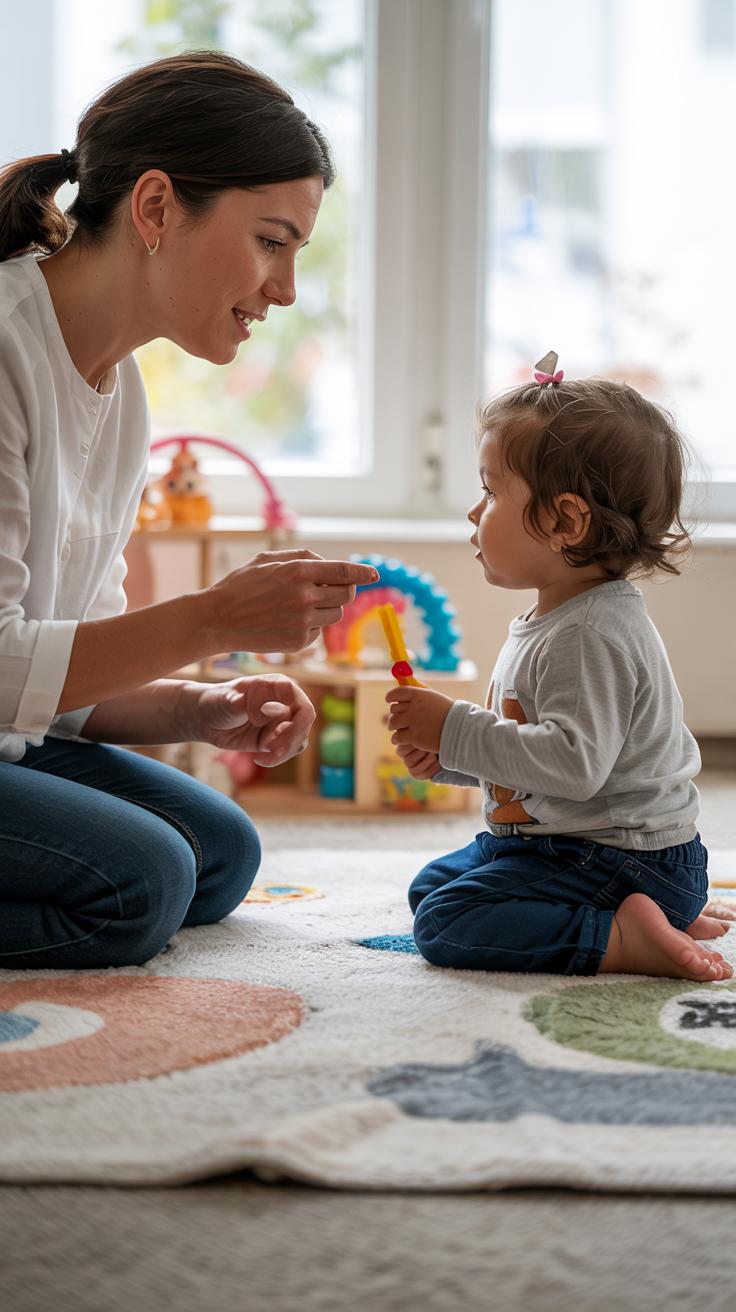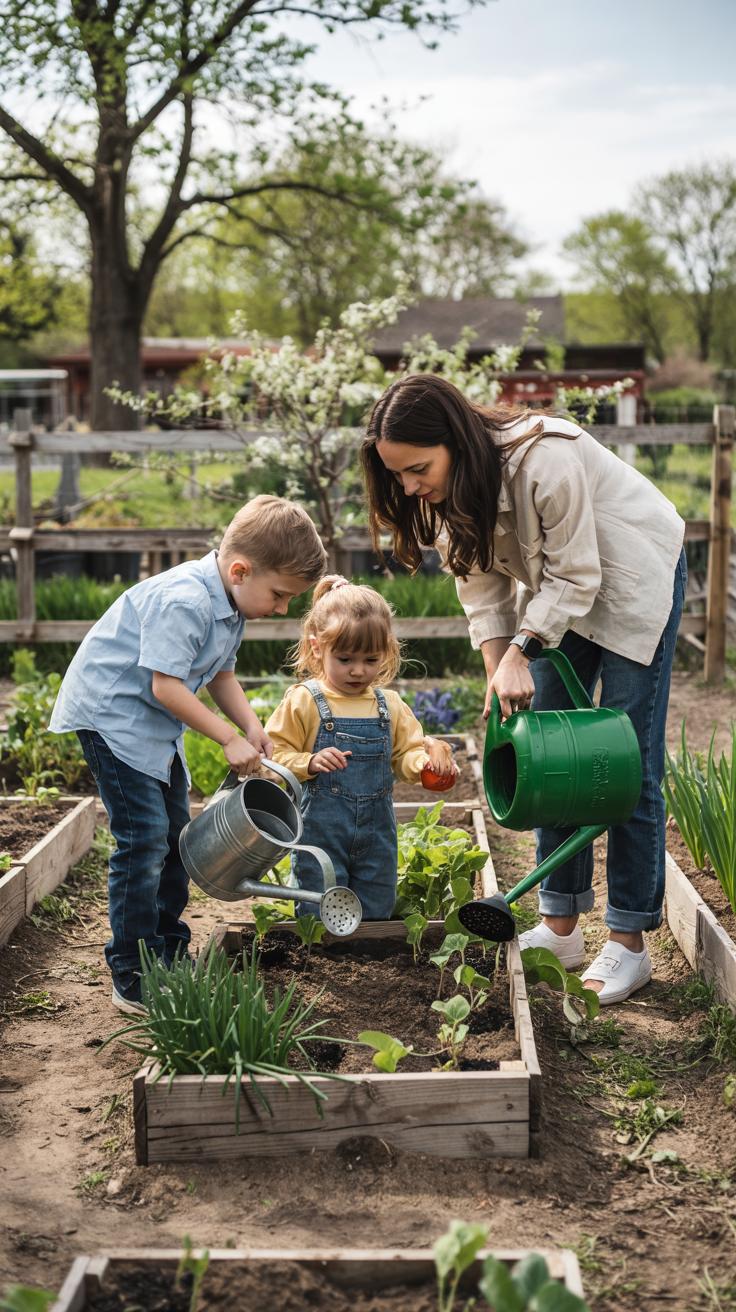Introduction
Building a happy family brings lasting joy to your life. Family is the foundation where love, trust, and support grow. When these values thrive, family members feel safe, loved, and connected. Achieving happiness in the family takes effort, clear communication, and shared goals. This article helps you understand how to create a joyful family life.
A happy family does not happen by chance. It requires daily actions and decisions. You will learn practical ways to improve how your family works together. You will also find ideas to strengthen relationships with your spouse, children, and relatives. When you apply these ideas, your family becomes a place of joy and belonging for everyone.
Understanding What Makes A Family Happy
Every happy family shares certain core qualities. Love creates a strong connection among family members. Trust builds safety and confidence in one another. Respect allows each person to feel valued and heard. Open communication helps family members understand feelings and solve problems together. Shared experiences build a sense of belonging and create meaningful memories.
Without these elements, families may feel disconnected or face ongoing conflicts. Ask yourself: How often do you express appreciation to your family? Do you listen closely when they speak? Making time to talk or enjoy activities together strengthens your family’s foundation. Even small actions like a kind word or a simple shared meal can nurture happiness.
Think about your family today. Which of these elements shine the brightest? Which could you work on to help your family feel closer and happier?
Key Ingredients of Family Happiness
Love means caring deeply, supporting each other through good times and bad. Trust shows that your family members believe in and rely on one another. Respect means honoring each person’s feelings and opinions without judgment. Open communication encourages honesty and lets everyone share their thoughts freely. Quality time involves spending moments together to build bonds and create shared memories.
Each piece is necessary. For example, without trust, love may feel fragile. Without respect, communication breaks down. When you make an effort to express love and listen without interrupting, you provide emotional safety. Imagine sitting with your child and asking about their day, fully focused on their answer. This simple act grows respect and trust.
Which key ingredient can you add more of to your family life today?
How Happiness Impacts Family Members
Living in a happy family gives you a sense of emotional security. You feel safe to be yourself and share your feelings. This security helps reduce stress and builds confidence. Children raised in happy homes often develop better social skills because they learn how to communicate and solve problems early on.
Happiness in a family also encourages support during tough times. When family members rely on each other, challenges seem less overwhelming. Imagine facing a problem and knowing your family will stand beside you. This support creates resilience that lasts through life’s ups and downs.
How does your family’s happiness affect your personal growth? What steps can you take to strengthen this positive impact today?
Building Strong Communication Habits
Clear and honest communication helps your family understand each other better. When everyone speaks openly, it creates a space where feelings and thoughts flow freely. This openness reduces misunderstandings that often lead to arguments. Imagine a family where each person knows they can share without judgment. Conflicts then become easier to handle because problems are addressed before they grow.
Building these habits takes regular effort. You can encourage honesty by responding with kindness and patience, even when the message is tough. Ask yourself how often you check in with your family members not just about daily tasks, but about their emotions and concerns. When communication is strong, your family builds trust that lasts through challenges.
Active Listening and Speaking Up
Active listening means truly hearing what your family members say. This includes paying full attention, not interrupting, and asking questions to understand better. When your child or partner shares, try to focus only on them without thinking about your reply. How will this change the way you respond?
At the same time, encourage everyone to speak up respectfully. Expressing feelings clearly helps prevent confusion and hurts. Use “I” statements like “I feel upset when…” to share your experience without blaming others. Practicing these habits builds respect and keeps conversations open.
Handling Conflicts with Care
Disagreements happen in every family. How you handle them makes a big difference. Try to stay calm and listen to all sides without blaming. Questions like “What is the real problem here?” can redirect the focus to solving issues instead of winning arguments.
Work together to find solutions that everyone accepts. This might mean compromising or agreeing to revisit the issue later. Remember, you want to protect relationships, not break them. When you approach conflicts with care, your family learns that challenges can bring you closer instead of pushing you apart.
Creating Quality Time Together
Spending meaningful time together helps your family build memories and deepen your bond. Regular moments of connection allow you to share experiences beyond daily routines. When you focus on enjoying each other’s company, you create a strong foundation for happiness. Family dinners, casual walks, or even simple conversations can turn into cherished memories. How often do you pause your busy day to fully engage with your family? Making time to listen and laugh together strengthens your relationships. Quality time is about presence, not just being in the same place. It makes each family member feel valued and understood. What small moments could you turn into quality time this week? Prioritizing these moments shapes lasting joy and a sense of belonging for everyone.
Planning Family Activities
Scheduling activities that everyone enjoys boosts your family’s connection. Consider weekly game nights where everyone’s ideas matter. Try cooking meals together or exploring parks on weekends. These activities don’t need to be complicated but should invite fun and teamwork. You might create a family photo album, work on a garden, or take turns picking movies. Regular activities encourage shared goals and laughter. They also build trust as family members support each other. What simple activity could your family commit to this month? Making plans shows you value spending time as a group. It helps you all look forward to enjoyable moments together and create strong bonds.
Making Time in Busy Schedules
Balancing work, school, and personal tasks can feel like a challenge, but your family time matters. Try setting clear boundaries where work ends and family begins. Use calendars to block family time, just like meetings or appointments. Even short, focused moments count, like reading a story before bed or a quick walk after dinner. Communicate your plan with everyone so everyone’s schedule fits better. Ask yourself what can wait to free up time for your loved ones. The effort you put into making space for family sends a message of care. How can you adjust your day tomorrow to include meaningful family moments? Small changes can brighten your family’s life over time.
Supporting Each Others Growth
Supporting your family members in their personal goals creates a foundation for lasting joy. When everyone feels free to pursue what matters most to them, it encourages confidence and trust within the family. You build a space where each person knows they are valued not just for who they are now but for who they want to become.
Imagine your child wanting to learn guitar or your partner taking a course to change careers. How can you encourage these interests? Offering time, listening without judgment, or helping with small obstacles can make a big difference. This support shows that their dreams matter to you and strengthens the family bond.
Challenges will arise, but your willingness to be present emotionally can motivate family members to keep moving forward. When a family member feels stuck or frustrated, asking simple questions like “How can I help?” or “What do you need right now?” opens opportunities for real support. What steps can you take today to stand by their side during tough times?
Encouraging Hobbies and Learning
Helping family members follow their hobbies boosts happiness and self-esteem. When your teenager spends time drawing or your spouse joins a book club, the whole family benefits from that positive energy. Supporting these passions encourages creativity, patience, and growth.
You might encourage a child by attending their recital or creating a quiet space for a partner to practice a new skill. How do you celebrate others’ interests in your home? Recognizing and praising small wins builds confidence and shows you respect their efforts. What hobby could use more encouragement in your family?
Being Present in Challenges
Life’s difficulties become easier when family members know they are not alone. Offering your presence during hard times truly matters. This could mean sitting quietly with a child struggling with homework or helping a partner manage stress after work.
Listening carefully without immediately trying to fix the problem often brings more comfort. You can also encourage positive thinking by reminding them of past successes or breaking big problems into smaller, manageable parts. What simple act of support can you offer today to make a difference in a family member’s challenge?
Sharing Family Responsibilities Fairly
Families function better when chores and tasks are shared fairly. When everyone knows what to do, daily life runs more smoothly and arguments over workload decline. Dividing responsibilities creates teamwork, encouraging family members to rely on each other.
Think about how much easier chores become when everyone participates. Whether it’s cleaning, cooking, or running errands, sharing these jobs helps prevent anyone from feeling overwhelmed. This balance keeps peace and respect alive in the home.
How are duties assigned in your family? Does each person have clear tasks? Fair division of work builds trust, respect, and a sense of belonging. A family that works as a team becomes stronger and happier together.
Assigning Tasks Based on Age and Ability
Not all family members can do the same chores, but everyone can contribute. Assign tasks based on age and ability to keep duties fair and manageable. Younger children might put away toys or set the table, while teens can wash dishes or mow the lawn.
Breaking down chores into simple steps lets everyone participate without stress. Balance heavier tasks with lighter ones and rotate duties to keep things fresh. Check in often to adjust roles when someone grows or their schedule changes.
Are chores assigned to fit each family member’s strengths? Matching tasks like this prevents frustration and helps kids learn responsibility gradually. Fair assignment makes it easier for your family to work together every day.
Teaching Cooperation and Accountability
Working together on family responsibilities teaches cooperation and accountability. When each person does their part, the whole family benefits. Accountability means stepping up and following through, even when no one is watching.
Use clear expectations and gentle reminders to encourage responsibility. Celebrate when tasks are completed well to reinforce good habits. Show how cooperation makes chores faster and life better for everyone.
What happens if someone skips their chore? Discuss how it affects the family and find solutions together. Teaching accountability helps children grow into reliable adults and builds a home where everyone contributes with respect.
Celebrating Traditions And Creating Rituals
Family traditions create strong feelings of belonging. When you gather for holidays or share special meals, you tie each generation together. These moments help everyone feel connected to something bigger than themselves. Celebrating cultural practices brings history into your home and invites stories from past generations.
Think about your family’s special holiday dinners. What small acts make these gatherings unique? Maybe it’s a recipe passed down or a game everyone plays afterward. These traditions give everyone something to look forward to and remember.
New family rituals build fresh memories. You can start simple activities like a monthly movie night or a weekend walk. Try asking each family member what they would enjoy doing together regularly. This lets everyone feel they have a voice and a part in shaping your family life.
What new tradition could make your family feel closer? Could you begin a ritual that marks small wins or a day just to share stories? Creating these moments strengthens bonds and builds joy that lasts across years.
Promoting Positive Discipline And Boundaries
Using Positive Reinforcement
You might wonder how your words can shape your family’s behavior. Praising good actions not only motivates your loved ones but also builds their confidence. When you say, “Thank you for helping set the table,” you show that you notice and appreciate effort. This encourages repeating positive behaviors more than punishments ever could.
Try to catch your family members doing something right every day. Celebrate small achievements like finishing homework or sharing toys without being asked. This creates a positive cycle where everyone feels valued and respected. How often do you give specific compliments instead of generic praise?
Using positive reinforcement helps build a joyful environment where good behavior grows naturally. It strengthens your relationships by showing you care about their actions and feelings.
Setting Clear Rules and Consequences
Clear rules help everyone understand what is expected. When boundaries remain consistent, your family feels safer and more secure. Imagine your child knowing exactly what happens if they miss bedtime—this predictability reduces stress for both you and them.
Discuss rules openly, so each person understands why they matter. Schoolwork might require a quiet hour, or screen time may have limits. Set fair and reasonable consequences, like losing a privilege for missed chores. Be firm but kind.
Consistency makes rules effective. If limits change daily, confusion and frustration grow. What rules in your home help bring order without causing conflict? Clear boundaries show respect and create trust, making your family stronger over time.
Maintaining Emotional Wellbeing At Home
The happiness of each family member depends on mental and emotional health. You can build a happy family by making emotional wellbeing a priority for everyone. When people feel understood and supported, peace grows in the home.
Everyone has worries or tough days. Respecting each other’s feelings without judgment creates a strong foundation. Think about your own family—do your loved ones feel they can share their thoughts openly? If not, what might you change to encourage more honest talks?
Simple daily habits help keep minds healthy. Listening carefully, showing empathy, and checking in with each other are steps you can take. When every person’s emotional needs get attention, the family becomes a place of lasting joy and comfort.
Creating A Safe Emotional Space
You can make your home a place where feelings can be shared freely. Open conversations invite trust. When someone expresses sadness, anger, or fear, and others respond kindly, it builds comfort.
Try asking your family members about their day and how they feel. Use words that show you want to understand, not judge. Saying things like, “That sounds hard. Do you want to tell me more?” encourages openness.
Showing respect for feelings, even if they seem small, helps everyone feel valued. When your home welcomes emotions, it becomes easier to solve problems before they grow. What small changes could you make today to create a safer emotional space?
Recognizing Signs Of Stress or Anxiety
Stress and anxiety can hide behind silence or changes in behavior. You might notice a family member becoming quieter, restless, or quick to anger. These signs signal they might need support.
Pay attention when someone avoids activities they enjoy or has trouble sleeping. People often don’t say they feel overwhelmed, so watch for actions as well as words.
If you spot these signs, ask gently how they are feeling. Offer your time and help without pressure. Sometimes, sharing your own experiences with stress can open the door for them. How will you watch for these signals in your family? What will you do when you see them?
Strengthening Family Bonds Through Shared Goals
When your family sets clear goals together, it creates a teamwork mindset. Working toward a shared purpose encourages everyone to support each other. This sense of unity helps build trust and cooperation.
Imagine deciding to improve your family’s health by exercising weekly or cooking healthier meals. Each member plays a role, whether planning activities or preparing food. This joint effort brings families closer because everyone contributes to the outcome.
Shared goals also create meaningful conversations about your values and priorities. Asking questions like, “What do we want to achieve as a family?” invites everyone to take part. This creates a stronger connection than just doing activities separately.
When everyone understands the purpose behind their actions, it reduces conflicts and encourages patience. Your family learns to work as a team, which strengthens bonds and builds lasting happiness.
Setting Achievable Family Goals
You can start by talking openly about what matters most to your family. Pick goals that fit your current situation and interests. For example, aim to save a set amount of money each month or plan monthly game nights. These goals should feel realistic and motivating.
Break larger goals into smaller steps that everyone can manage. If health is a goal, start with simple changes like taking daily walks or cutting back on sugary drinks. Assign tasks to each family member based on their strengths and preferences.
It helps to write down your goals and keep them visible. Use a whiteboard or a chart in a shared space. When your family sees progress, it motivates you to keep going.
Tracking Progress And Celebrating Success
Regularly check how your family is doing with its goals. Set a time every few weeks to review progress together. This keeps everyone aware and involved.
Celebrate successes, even small ones. Praise your family when steps are reached, like saving a portion of your budget or completing a weekly workout challenge. Celebrations can be simple, like a special meal or a fun outing.
Rewarding achievements keeps motivation strong. It also reminds everyone that teamwork produces positive results. When you mark milestones, you build momentum for the next goal.
Ask yourself and your family: How does celebrating together change your motivation? Could setting new goals after each success deepen your enjoyment of being a family?
Continuously Growing Your Happy Family
Reflecting On Family Strengths And Challenges
Family meetings create a space where every member can share thoughts openly. These meetings help you see what your family does well and where it struggles. When your family talks about the good things, it builds confidence and encourages those behaviors to continue. When challenges come up, the family can decide together how to fix or improve them.
Try asking your family: What moments brought us joy this week? What moments felt hard? What can we do differently next time? This kind of reflection gives everyone a chance to learn and grow together. It also keeps small problems from turning into bigger ones. Over time, your family becomes better at solving problems and supporting each other.
Adapting To Life Transitions Together
Change is a part of life. Moves, new jobs, or kids growing up can cause stress or distance in a family. Staying connected during these shifts takes effort and communication. Check in often and ask how each person feels. Share your own worries and hopes too.
When your family faces changes, invite everyone to discuss how those changes affect them. Plan activities or routines that help everyone feel included and supported. For example, start a new family tradition after a move or celebrate milestones together when kids grow older. These actions keep bonds strong and create a shared sense of belonging despite changes.
Ask yourself: How can your family respond to transitions so that everyone feels heard and cared for? What habits can your family build to handle change as a team?
Conclusions
Focusing on love and respect shapes your family’s happiness. Simple actions like listening carefully and spending quality time help build strong connections. Encouraging each other and solving problems together reinforce trust. When you create a caring environment, every member feels valued and supported.
Keeping your family happy takes ongoing work and attention. Regularly check in with family members about their feelings and needs. Adjust your habits to keep improving relationships. Ask yourself how you can contribute to family joy daily. When you put your family first, lasting happiness follows, creating a home full of positive memories and strong bonds.


























